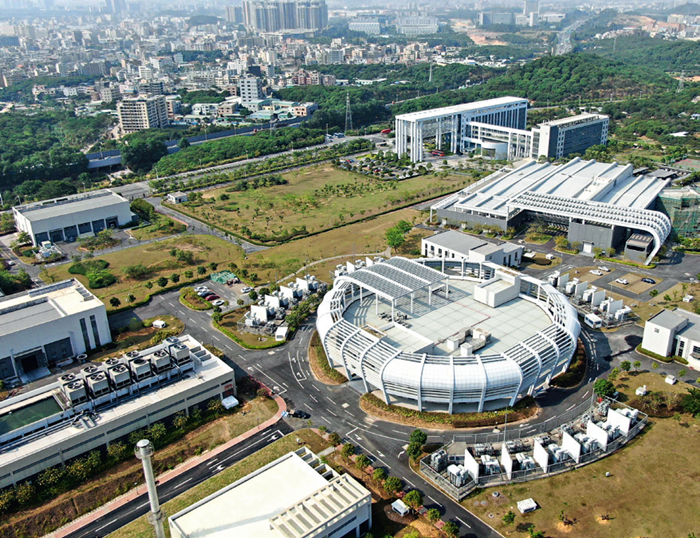|
||||||||||
| Home Nation World Business Opinion Lifestyle ChinAfrica Multimedia Columnists Documents Special Reports |
|
||||||||||
| Home Nation World Business Opinion Lifestyle ChinAfrica Multimedia Columnists Documents Special Reports |
| ChinAfrica |
| A Highland of Innovation |
| GBA is on its way to become a hub of research and development of advanced technologies |
| Edited by Hu Fan 丨VOL. 14 MAY 2022 ·2022-04-26 |

The founder of a tech startup teaches students in Hengqin Innovalley, Zhuhai, Guangdong Province, on July 14, 2021 (XINHUA)
Narwal, a company specializing in home robots, is a good example of the boost that tech companies can get in the Guangdong-Hong Kong-Macao Greater Bay Area (GBA). In just six years, the company, founded in 2016 in Dongguan, Guangdong Province, has established a firm foothold in the highly competitive floor sweeper robot industry in China.
During the “Double Eleven” online shopping festival in November 2019, it launched its first generation of sweeper robots and gained market share with an innovative self-cleaning mop. The second generation of the sweeper was launched in September 2021, which was the first sweeper robot in the industry that could automatically receive and drain water. That month, the product gained a 17.13 percent share of the domestic online market of sweeper robots, ranking second among all brands.
Zhang Junbin, the company’s young founder, attributes their success to the fertile soil of technological innovation in the GBA. When the company was started, they had the guidance from a research team of the Hong Kong University of Science and Technology. Experienced business mentors shared their know-how about starting and running a business. In Songshan Lake High-Tech Industrial Development Zone of Dongguan, where the company is located, they have been given strong policy support such as rent subsidies, while the unparalleled supply chains in the GBA can fully cater to their production needs. These have allowed the company to focus on product development.
In the GBA, there are many more companies like Narval which have benefited from the area’s growing ability to support technological innovation. For three consecutive years from 2019 to 2021, the Shenzhen-Hong Kong-Guangzhou Science and Technology clusters in the area ranked second in the Global Innovation Index, according to reports of the World Intellectual Property Organization.
Mounting infrastructure
As a major indicator of technological innovation ability, large scientific facilities have been built in good numbers in the area, forming a world-class cluster of major science and technology infrastructure. When shared across the area, these facilities, which are too expensive for any individual organization to build on its own, provide much-needed tools for scientific research.
By Songshan Lake in Dongguan sits one of China’s most expensive large scientific projects — China Spallation Neutron Source (CSNS), an accelerator-based multidisciplinary user facility that provides neutrons that are used in the study of the microstructure of materials.
The 2.3-billion-yuan ($360 million) project was the first one of its kind in China. Before it was built, there were already elite scientists in China doing research that needed spallation neutron. They had to turn to foreign facilities, which proved difficult because they had to queue for their turn and some samples couldn’t survive long-distance transport.
Since the equipment was put into operation in August 2018, it has registered more than 3,400 users worldwide and contributed to more than 600 scientific studies, with results covering multiple fields such as energy, physics, materials and life sciences. Among all user studies completed so far, those from the GBA account for about one-third, among which, 10 percent are users from Hong Kong and Macao.
In addition to the CSNS, the GBA area also has many laboratories. As of the end of 2021, Guangdong cities were home to 30 national key laboratories and 389 provincial key laboratories. In addition, 20 laboratories jointly built by Guangdong, Hong Kong and Macao, and four laboratories built under the Belt and Road Initiative are located in the Guangzhou, capital of Guangdong.

A view of China Spallation Neutron Source in Songshan Lake High-Tech Industrial Development Zone, Dongguan, Guangdong Province, on April 21, 2021 (XINHUA)
Industrial boost
Tech companies constitute a key link in the GBA’s overall chain of technological innovation, as they transform scientific research results into profitable goods. According to Guangdong cities’ 2022 government work reports, in 2021, the total number of high-tech enterprises in the Guangdong cities in the area reached 56,100, an increase of 7,000 from 2019.
Companies in the cities applied for the most PCT (Patent Cooperation Treaty) patents than those in any other province. PCT patents are more difficult to obtain than ordinary patents and are usually used to measure the vitality of technological innovation in a region. Among the top applicants, Huawei was the world’s largest PCT applicant for the fourth consecutive year with 5,464 applications. Among the top 20 applicants were also OPPO, ZTE and Ping An Technology, all GBA companies.
Even new companies like Narwal have a remarkable performance in innovation. As a robotics company, Narwal’s research involves simultaneous localization and mapping, 3D perception, artificial intelligence object recognition, robot structure, big data application and many other fields. It has been granted more than 200 patents.
Aiming high
Despite its achievements in furthering science and technology, the GBA has gaps to fill before it achieves high-quality development of its tech industries, as pointed out by many experts. It’s not been long since the area has emphasized the development of technology, which takes time to accumulate, and often industries in the area rely on purchased technology in order to get into the game as soon as possible. In addition, when developing industries, the emphasis is more on scale and investment than on R&D. This has resulted in a lack of original and trend-setting research.
Indeed, before the introduction of the Outline Development Plan for the Guangdong-Hong Kong-Macao Greater Bay Area, which marked the accelerated integration of the area, weak capacities in basic research and innovation were prominent shortcomings of the area. In 2018, Guangdong Province’s spending on basic research was only 4.3 percent of all its funding for scientific research, which was lower than the national average of 5.5 percent. The plan proposed that efforts should be made to improve basic research.
To this end, the province’s 2022 government work report proposed to implement a 10-year plan to enhance basic research, increasing spending on basic research to more than one-third of the province’s special funds for technological innovation.
In a draft plan for reinforcing basic research, the government has targeted 13 key fields including quantum science, brain science and semiconductor. On top of the agenda is quantum science. The government plans to combine the resources across the GBA to build a national center for quantum sciences.
According to the province’s Department of Science and Technology, the goal is to promote the province’s performance as well as international influence in basic research, and to rank among the world leaders in several important areas, so as to build the GBA into a highland of basic research with global influence
| About Us | Contact Us | Advertise with Us | Subscribe |
| Copyright Beijing Review All rights reserved 京ICP备08005356号-5 京公网安备110102005860号 |